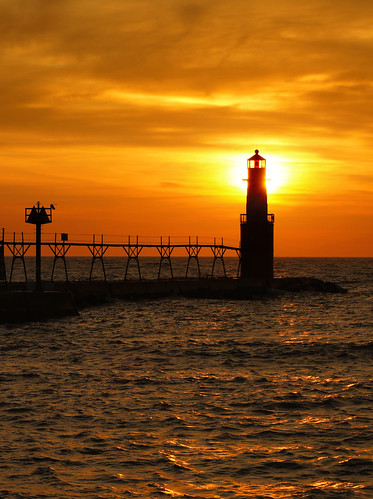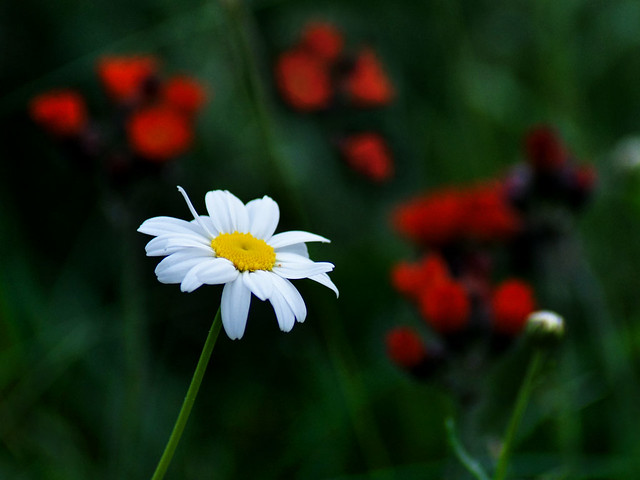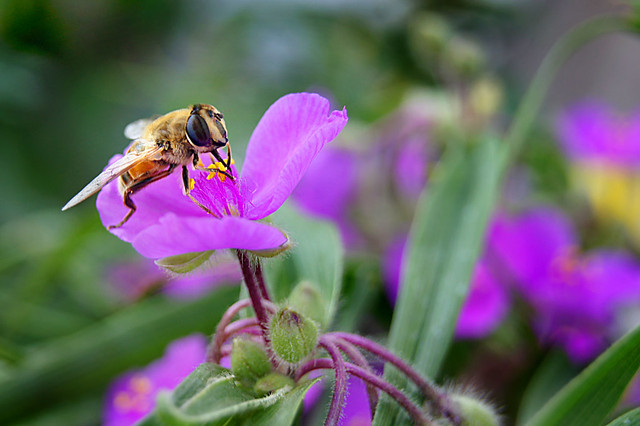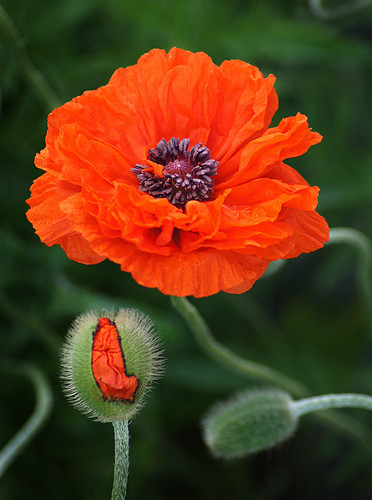Bill Pevlor
The Breakfast Club
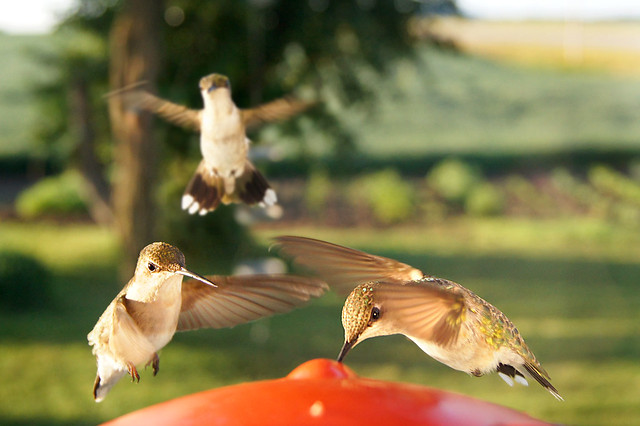
During the few summer months at our rural Wisconsin home, it’s common to hear a distinctive humming sound. If you glance out the window, you’re likely to spot ruby-throated humming birds zipping back and forth, to and fro – competing for a few seconds at the best seat in the house.
I call this “The Breakfast Club” because this group – all females – were photographed around 6 am.
Click the image to view a larger version.
Popular Spot
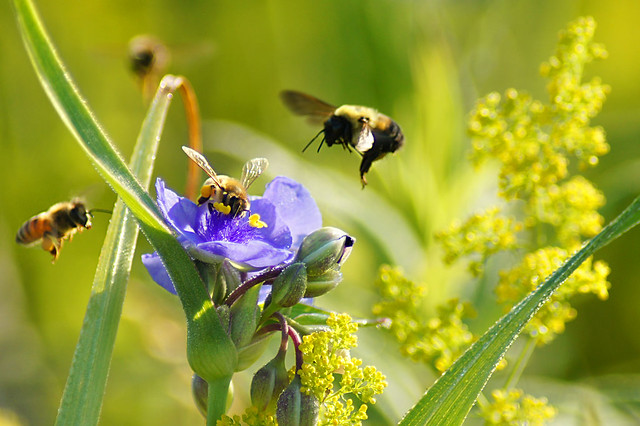
Flowers are blooming and the bees are buzzing. This proved to be a popular spot in the meadow. Honey bees and bumble bees were frequenting this clump of purple spiderswort. It was early morning – maybe 6:30 (notice the dew still on the plants) – and they were already hard at it.
To get this shot, I put my camera on a tripod and simply focused on a colorful, well lit clump of flowers and waited. When a bee would enter into the scene, I would start clicking. The bees you see here are exactly how I photographed them…but they were never in the shot together. Since the focus and framing never changed, it was easy to combine the various bees from separate images into one.
To get a better view of the image details, click on it and a larger version will open in another tab.
Bold and Beautiful
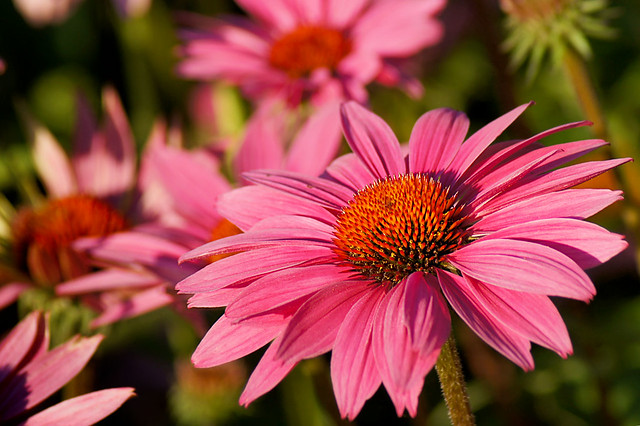
These bold, big-as-all-outdoors flowers remind me of purple cone flowers. I’m not sure they are cone flowers because the petals don’t slope downward. I’m not an expert, I just appreciate the beauty.
These beauties were photographed in the center of the circular entrance to the Kraft Building at the Green Lake Conference Center, Green Lake, Wisconsin.
To see a larger version, click on the photo.
Enigma on Wings
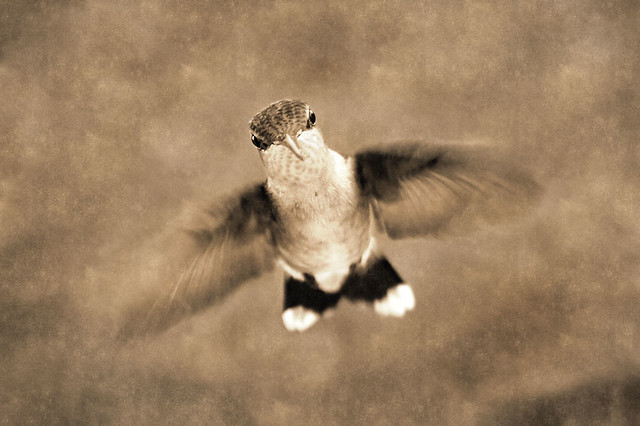
I spent some time the other day taking my first hummingbird photos of the season. This is a female, ruby-throated hummingbird looking straight at the camera. The wings are just a blur.
To get this unique look, I took all the color out of the original image, added a bit of sepia tone and then a texture effect.
To get a better view, click on the image for a larger version.
Monarch of the Meadow
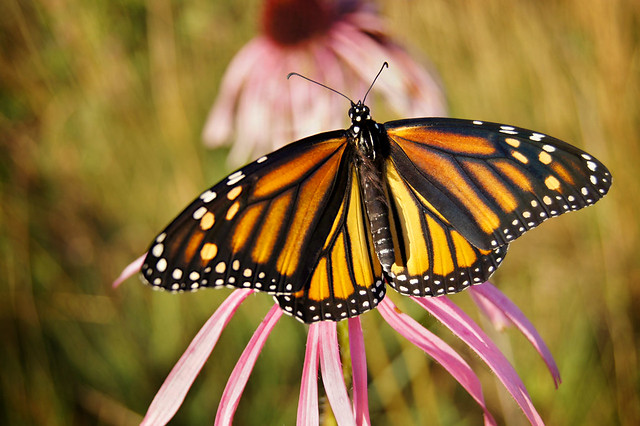
This monarch butterfly, sitting on the head of a cone flower, was stretching its wings in the early morning sun. I like the way the petals from the flower look like trailing streamers.
I was delighted to capture this image because butterflies have been a real challenge for me. Of all my attempts – chasing the fidgety creatures around with my camera – I’ve only been able to catch a couple of images I’ve been happy with. I just happened to catch this one early in the morning, not fully awake. I even had to nudge it to get it to open its wings.
To see a larger version of this image, click on the photo.
Comforting Glow
It hard to beat the beauty of a sunrise filling the sky with color and the waves with sparkles. This is one of my favorite subjects – the lighthouse at Algoma, Wisconsin as the sun rises over Lake Michigan.
If you have a large monitor, you may be able to view a larger image by clicking on the photo.
Garden Party
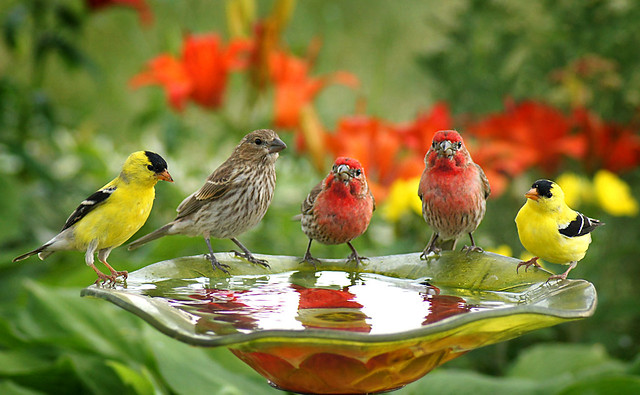
I went to a garden party to reminisce with my old friends
A chance to share old memories and play our songs again
Rick Nelson
These are the some of the regulars who frequent the birdbath and feeders in our yard. The yellow ones are male American Goldfinches. The other three are House Finches – the males having the red coloring.
In the interest of full disclosure – I never got more than three of them to belly up to the bar at one time, so a little Pops Digital magic was needed to fill up the spaces.
To get a better view, click on the image and you’ll see a larger version.
Unassuming Charm
On A Pedestal
Poppy Progression
Poppies are some of my favorites. The colors are always vibrant, the multi-layer petals are interesting and the center provides a natural focal point.
This photo shows the poppies in three stages – the pre-bloom bud, the bud just beginning to burst forth, and full, glorious bloom.
If you have a large monitor, you may be able to view a larger version of this photo by clicking on it. To see other, previously posted poppy images, click HERE.



















































